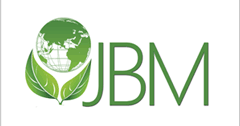Abstract
Overpopulation, urbanization, and economic race increase the pressure on freshwater resources resulting in water scarcity challenges around the globe. Moreover, the generation of wastewater is also enhancing the scarcity threats for freshwater resources. Water scarcity issues forced the policymaker, thinker, scientist, and researcher to think about non-conventional water resources to cope with the increasing demands. This wastewater recycling and treatment play an evident role to fulfill the growing demand for freshwater in socioeconomic sectors especially, for agriculture, due to its 70 % dependency on freshwater resources. Different wastewater treatment methods along with merits and demerits are in practice for the socio-economic system. Constructed wetlands are environment friendly and a cost-effective technology to remove metal and non-metal pollutants from contaminated water. This paper aims to compile information about heavy metals' effects and their treatment through constructed wetlands. It also reviews intensely the potential of different types of constructed wetlands by using different aquatic plant species for the removal of contaminants from wastewater.
Article History
Received: Jul 27, 2022; Accepted: Sep 13, 2022; Published: March 30, 2023
Recommended Citation
Raza, H.,
ul Ain, Q.,
Bibi, H.,
Bibi, T.,
& Bilal, H.
(2023).
Potential of Constructed Wetlands for the Treatment of Heavy Metals from Wastewater,
Journal of Bioresource Management, 10
(1).





